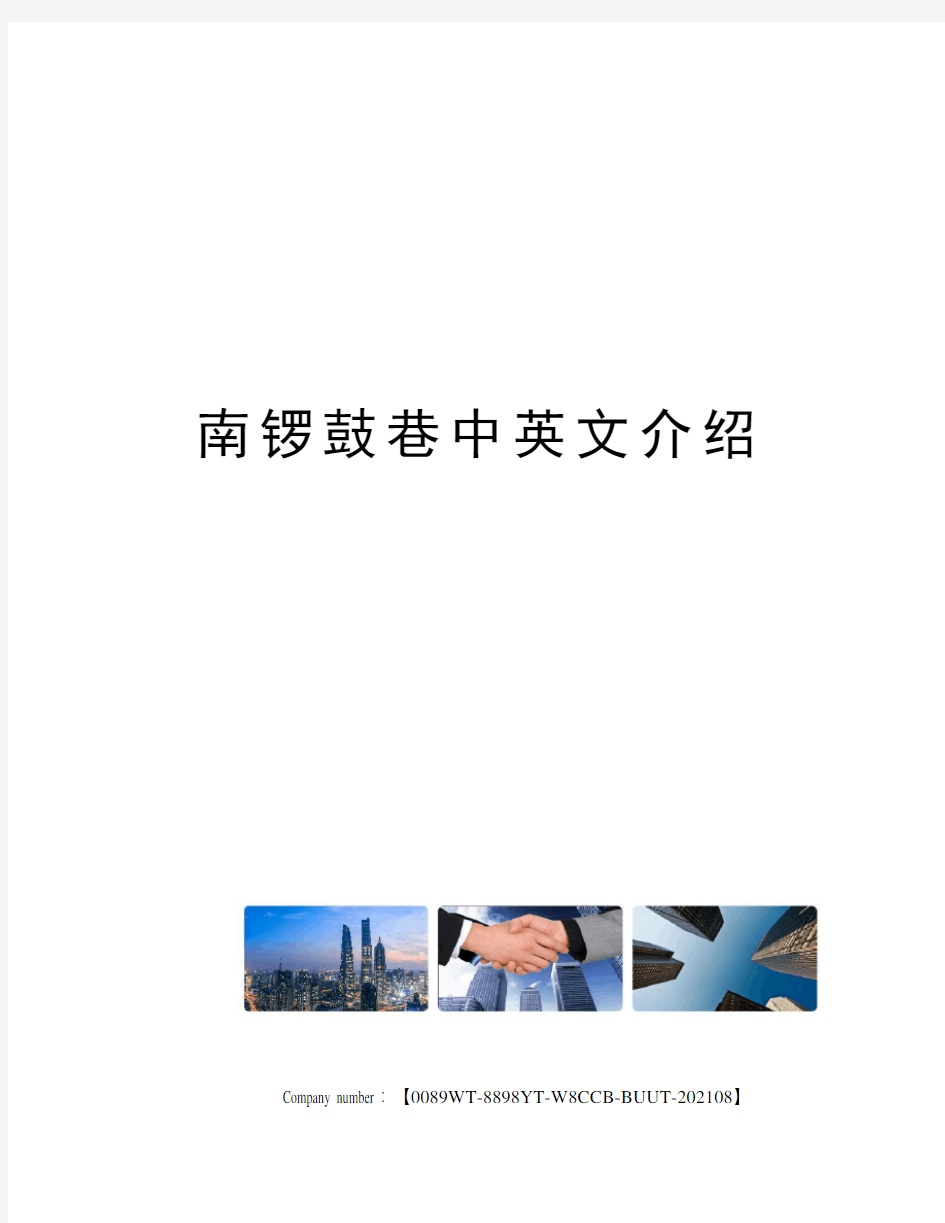南锣鼓巷中英文介绍

- 1、下载文档前请自行甄别文档内容的完整性,平台不提供额外的编辑、内容补充、找答案等附加服务。
- 2、"仅部分预览"的文档,不可在线预览部分如存在完整性等问题,可反馈申请退款(可完整预览的文档不适用该条件!)。
- 3、如文档侵犯您的权益,请联系客服反馈,我们会尽快为您处理(人工客服工作时间:9:00-18:30)。
南锣鼓巷中英文介绍 Company number:【0089WT-8898YT-W8CCB-BUUT-202108】
South Luogu Lane
Also called Nanluoguxiang, Nanluogu Alley, Nanluoguxiang Hutong, 南锣鼓巷) South Luogu Lane is 786 meters long and 8 meters wide, connecting Gulou East St. on its north and Di’anmen East St. on the south. South Luogu Lane was built in 1267 when Yuan Da Du was constructed, and was a component of the market area in Yuan Da Du’s urban layout, which had the imperial government built in the front, the market area at the back, the imperial ancestral temple on the left, and the sacrificial altar on the right. The lane was part of the Zhaohui Community in the Yuan Dynasty, and served as the dividing line between the Zhaohui community and the Jinggong Community in the Ming Dynasty. It was under the jurisdiction of the Xianghuang Banner during the years of Emperor Qianlong, and belonged to the Left III Community in the late years of Emperor Guangxu and during the years of Emperor Xuantong. During the Republic of China years, it belonged to the Inner V Community.
The Lane was called “Luoguo Lane” in the Ming Dynasty due to its “luoguo”feature with the middle part higher than the two ends. In 1750, the lane got a homonymic name of “Luogu Lane”, and was divided into South Luogu Lane and Northern Luogu Lane(now within the Andingmen Community). The name of the lane remained “South Luogu Lane” during and after the years of the Republic of China. The Hutong was briefly called “Huihuang St.” during the Cultural Revolution and later regained its current name.
South Luogu Lane was built under the architectural concept of “residential blocks”– with the lane serving as the central line dividing 8 parallel Hutongs on each side, hence forming the outlook of a fish bone, or a “Wugong”. Thus, the lane was also called “Wugong Lane”. South Luogu Lane is the only remaining traditional residential area in China that still fully preserves the chess-board style layout of Hutongs typically found in the Yuan Dynasty, with its scale, quality and historical value unmatched by any other lanes.
South Luogu Lane was among the first 25 areas listed for historical preservation by the Beijing Municipal Government in November 1990. Currently, within the South Luogu Lane area, one site has been listed for national level preservation, 11 sites for municipal level preservation, and 9 sites for district level preservation. With its impressive historical and cultural legacy, South Luogu Lane has become an attractive area for tourism and cultural creativity in the ancient capital Beijing.
Today, South Luogu Lane is among one of the oldest Hutongs around and has a history of over 800 years. This near 800-meter long North-South alleyway is filled with bars, cafes, restaurants, artsy little shops, souvenir shops and cute boutiques. It's worth to spend an hour or two walking through the little alley ways and Hutongs around it.
Location: South Luogu Lane is situated at Beijing’s Dongcheng District, near the with its northern end at Gulou Dongdajie (Drum Tower East Street, 鼓楼东大街) (Walk
